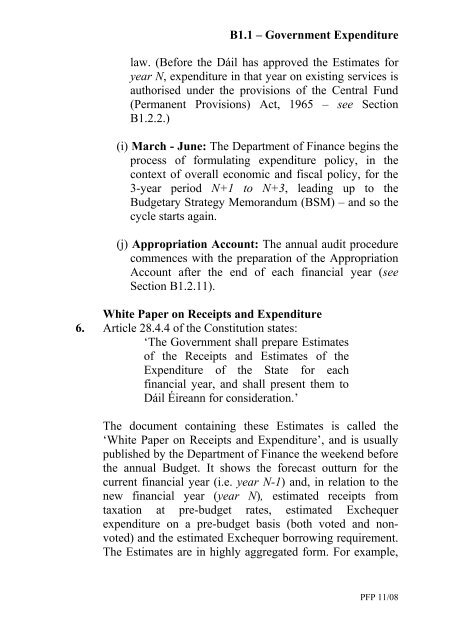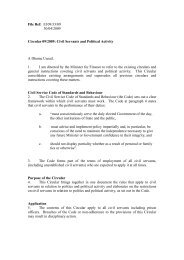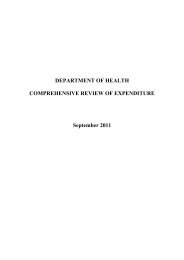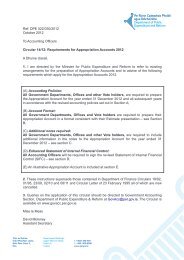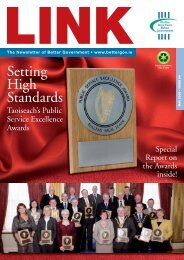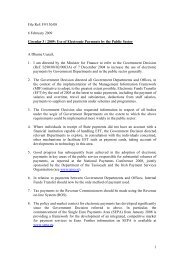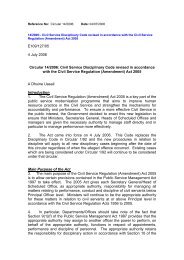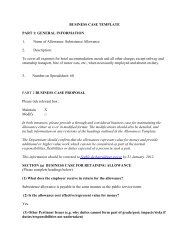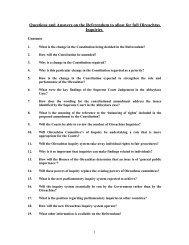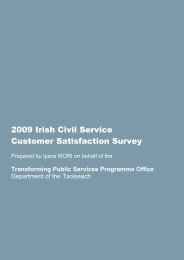Section B â The Financial Framework - Government Accounting
Section B â The Financial Framework - Government Accounting
Section B â The Financial Framework - Government Accounting
Create successful ePaper yourself
Turn your PDF publications into a flip-book with our unique Google optimized e-Paper software.
B1.1 – <strong>Government</strong> Expenditure<br />
law. (Before the Dáil has approved the Estimates for<br />
year N, expenditure in that year on existing services is<br />
authorised under the provisions of the Central Fund<br />
(Permanent Provisions) Act, 1965 – see <strong>Section</strong><br />
B1.2.2.)<br />
(i) March - June: <strong>The</strong> Department of Finance begins the<br />
process of formulating expenditure policy, in the<br />
context of overall economic and fiscal policy, for the<br />
3-year period N+1 to N+3, leading up to the<br />
Budgetary Strategy Memorandum (BSM) – and so the<br />
cycle starts again.<br />
(j) Appropriation Account: <strong>The</strong> annual audit procedure<br />
commences with the preparation of the Appropriation<br />
Account after the end of each financial year (see<br />
<strong>Section</strong> B1.2.11).<br />
White Paper on Receipts and Expenditure<br />
6. Article 28.4.4 of the Constitution states:<br />
‘<strong>The</strong> <strong>Government</strong> shall prepare Estimates<br />
of the Receipts and Estimates of the<br />
Expenditure of the State for each<br />
financial year, and shall present them to<br />
Dáil Éireann for consideration.’<br />
<strong>The</strong> document containing these Estimates is called the<br />
‘White Paper on Receipts and Expenditure’, and is usually<br />
published by the Department of Finance the weekend before<br />
the annual Budget. It shows the forecast outturn for the<br />
current financial year (i.e. year N-1) and, in relation to the<br />
new financial year (year N), estimated receipts from<br />
taxation at pre-budget rates, estimated Exchequer<br />
expenditure on a pre-budget basis (both voted and nonvoted)<br />
and the estimated Exchequer borrowing requirement.<br />
<strong>The</strong> Estimates are in highly aggregated form. For example,<br />
PFP 11/08


